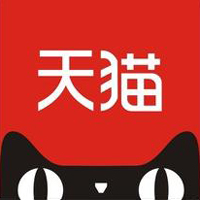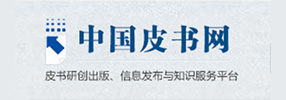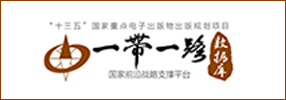
社会科学文献出版社 2013-07出版
政府竞争、财政转型与中国农区工业化

先晓推荐
相关海报
详情
展开
从理论上讲,一个国家的工业化必须有一定人口从事农业生产,农区的存在和整个国家或经济区的工业化并不冲突,农区并不一定是和传统农业文明相对应的一个概念,农区的农业现代化和区域经济的整体工业化完全可以统一起来。然而,在社会转型的初期,经营农业很难获得社会的平均利润率,农业部门自然很难吸引包括资本和劳动力在内的经济要素,农区从事农业生产本应该具有的比较优势就不复存在;在现行的分税制条件下,农区政府靠农业产业很难获得足够的财政收入,这就是农区地方政府工业化冲动的内在动因。可以说,农区政府在政府间竞争条件下必须推动本地区的工业化,现行的分权财政体制更加剧了这种工业化冲动。传统的农耕文化、整个国家的粮食安全、18亿亩耕地红线、正在上升的劳动力成本、环境和资源因素等,都构成传统农区工业化进程的制约因子,现行财政制度更加剧了传统农区工业化的难度。可以说,农区工业化并非一帆风顺。
游牧文明(采集和狩猎文明)向农耕文明的变迁 ,农耕文明向工业文明的转化,工业文明向信息文明的演进,都伴随着财政制度的进化。从贡赋到丁役,从土地、丁税到工商杂税,再到工业化时期的工商税收、所得税,从实物征收到货币征收,财政收入形式和渠道随着人类生产方式的进步而不断进化。从财政支出来看,从支出于“私”(王室宫廷)到支出于“公”(基础设施和社会保障),到影响宏观经济运行,财政变革无时不在进行。研究证明,工业化转型必然伴随着财政制度的转型,即收入方面的取之于“农”向取之于“工”转化、取之于“乡”向取之于“城”转化;在支出方面,由支之于“工”向支之于“农”转变、支之于“城”向支之于“乡”转变。在这一过程中财政的公共化取向日益突出,工业与农业、城市与乡村在财政收支上的权利与义务对等,不同经济体和人群作为纳税人可以享受相同的国民待遇。
地方政府竞争是指各辖区为了本地的利益最大化而采取相应的公共政策,以争夺有限的经济资源的竞争过程。中央政府和地方政府、不同级次的地方政府间为了追求辖区利益最大化, 相互之间就难免展开竞争。现有的大多数文献都把财政竞争划分为横向财政竞争、纵向财政竞争及标尺竞争三类。中国政府间竞争取决于竞争主体之间的利益互动,包括官员晋升竞争、公众的“用脚投票”推动、财政产权、税收剩余和投资冲动等。中国政府竞争的特色表现为中央政府管制下的地方政府间有限竞争,体制内竞争与体制外竞争相结合,有序竞争与无序竞争并存。财政竞争作为中国政府竞争的核心,其主要内容包括减免税优惠、税负输出与财政返还、支出竞争等。政府竞争必然导致农区政府的工业化冲动,这种冲动是一种合理的经济诉求,实现竞争性政府与农区工业化路径创新,关键是保证竞争的有序性。
现代市场经济国家,无论是联邦制国家,还是单一制国家,都实行分权的分税制财政体制。自20世纪70年代以来,财政分权一直是公共财政领域的焦点,成熟市场经济国家、转轨国家的支出责任划分各有自己的特点,尤其是美国、英国、日本等发达国家多级政府间的税收权限与税收范围划分,为我国分权财政体制提供了很好的借鉴。财政分权有其正面效应,包括资源配置功能与经济增长、引致公共投资功能与经济增长、硬化预算约束和提高地方企业效率与经济增长、引入竞争和制度创新机制与经济增长等,但同时也造成了地方政府间的税收竞争,现行财政分权体制下的分税制度、转移支付制度、税收返还制度等都决定了地方政府只有通过工业化才能获取更多的税收收入。可以说,财政分权正是地方政府工业化所面临的公共经济环境。改革现行财政分权体制,促进农区经济发展成为当务之急。
我国现行的财政制度正是造成传统农区工业化滞后的公共经济因素,传统农区在新中国成立以来为中国的工业化进程提供了全国性的公共产品,包括粮食安全、廉价劳动力、环境和资源等,却没有得到应有的补偿。改革现行财政体制,促进传统农区的工业化,有很多工作要做,包括现行税制改革、转移支付制度调整等都是这些工作的重要组成部分。当然,传统农区的工业化应兼顾国家的粮食安全,不以牺牲环境和资源为代价。
很显然,农区工业化需要财政支持,公共财政的收入、支出政策均应适应农区工业化发展的需要,建立一个适应农区工业化的公共财政转型的运行机制。公共财政转型应兼顾农业现代化和农区工业化,并与城乡基本公共服务均等化提供的目标相衔接,采取一系列政策措施,促进农区工业化、城镇化、农业现代化协调发展。
关键词:农区工业化 财政体制 政府间竞争 区域经济
In theory, a country’s industrialization always
needs a certain population to be engaged in agricultural production. The
presence of agricultural areas do not conflict with their industrialization and
agricultural areas are not a corresponding concept with the traditional
agricultural civilization, agricultural modernization and regional economic
industrialization can absolutely be unified. However, in the early stages of
social transformation, managing agriculture can hardly obtain the average
profit margin of society, so it is difficult for the agricultural sector to
attract capital and labor or other economic factors, the comparative advantage
agricultural areas should have for their engaging in agricultural production
will no longer exist; under the current revenue-sharing conditions,
agricultural areas can hardly obtain sufficient revenue. That is the intrinsic
motivation of agricultural areas‘local governments’ industrialization
impulse, it can be said that the intergovernmental competition condition has
forced the governments of agricultural areas to promote the industrialization
of the region, and the current decentralized fiscal system has exacerbated this
industrialization impulse. However, in the traditional agricultural areas, the
traditional farming culture, the food security of the whole country, the red
line of 18 million hectares of arable land, the rising labor costs and the
environmental and resource factors all constitute the limiting factors of the
process of industrialization in traditional agricultural areas, and the current
financial system exacerbated the difficulty of industrialization in traditional
agricultural areas. It can be said that the industrialization in agricultural
areas has not been easy.
No matter the transformation from nomadic
civilization (gathering and hunting civilization) to farming civilization, or
the conversion from agricultural civilization to industrial civilization, or
the evolution from industrial civilization to information civilization, the
great leaps of the society are all combined with the revolution of the
financial system. From “Gongfu” to “Dingyi”, from land taxes and poll taxes to industrial and commercial taxes,
from kind levy to currency levy, the forms and channels of taxation evolved
with the progress of human production; viewing from the ankle of the fiscal
expenditure, from spending in “private” use (royal palace) to expenditures in
“public” use (infrastructure and social security), and to influence the
macroeconomic, fiscal reformation has always being carried out. Studies have
shown that industrial restructuring must be accompanied with a reformation of
the financial system, that income used to be taken from the “agriculture” should now be taken from the “industry”, and wealth used to be taken from the “village” should be
taken from the “city”; expenditures on the “workers” should be transited to
support the “agriculture”, aids to“city”should be distributed to “village”;
during this progress the public
orientation of finance will become increasingly prominent, industry and
agriculture, urban and rural will hold equal rights and obligations in fiscal
revenue and expenditure, and different economies and the crowd can enjoy the
same national treatment as taxpayers.
Competition in the local government means that
each jurisdiction takes the appropriate public policy in order to maximize the
benefits of the local and competitive process to compete for limited economic
resources. Central government, local governments and different levels of local
government will inevitably compete with each other in order to maximize pursuit
in public goods. Most of the existing literature regarded financial competition
is divided into three types: horizontal fiscal competition, vertical fiscal
competition and yardstick competition. Competition depends on the interests of
the interaction between the main competition in the Chinese government,
including officials promoted competition, promote public vote with their feet,
the fiscal property rights, taxes remaining and investment impulse. Under the
control of the central government ,the competition of Chinese local government
are limited competition, means of competition and the choice of ways to
independent space is larger, competition in the system combined with outside
the system, the orderly competition with disorderly competition co-exist.
Financial competition as the core competition by the Chinese government,
including taxes exemption and reduction, output and financial return of the
taxes burden and expenditures competition. Government’s competition will
inevitably lead to the government’s industrialization of the agricultural areas
impulse, this impulse is a reasonable economic aspirations, in order to achieve
the path innovation of competitive government and agricultural
industrialization, the key is to ensure the orderly nature of the competition.
whether it is a federal state or a unitary state,
modern market economy country decentralize the taxes sharing system. Since the
1970s, fiscal decentralization has been the focus of the field of public
finance, The fiscal expenditure responsibilities in the mature market economy
countries and transition developing countries have their own characteristics.
The United States, Britain, Japan and other developed Western countries provide
a good reference in level intergovernmental taxes privileges and taxes range
for China. The positive effect about fiscal decentralization, including
resource configuration capabilities and economic growth, causing public
investment function with economic growth, hardening budget constraints and to
improve the efficiency of local businesses and economic growth, the
introduction of competition and institutional innovation mechanisms and
economic growth, and the industry caused by the taxes competition between the
local government. The taxes system under the current fiscal decentralization,
the transfer payment system and taxes refund system. All mean that, in order to
get more taxes revenue, the local government must build industrialization
system. It is can be said that, the fiscal decentralization of public economic
environment caused the local government industrialization. Reform the current
financial system to promote the economic development of the agricultural areas
is a top priority.
China’s current financial system is the public
economic factors lag in the industrialization of traditional farming areas.
Since the founding of New China in 1949, traditional agricultural areas
provided national public goods, including food security, cheap labor,
environment and resources, etc. But they did not get comyensation and these
should be provided by the central government Reform of the existing financial system,
promote the industrialization of traditional agricultural areas, there is a lot
of work to be done: including adjustments the current taxes system, the
transfer payment and so on. Of course, the industrialization of traditional
agricultural areas should coordinate with the country’s food security, not at
the expense of the environment and resources.
Obviously, the industrialization of the
agricultural areas need financial support, public finance revenue and
expenditure policy should be adapted to the needs of the industrial development
of the agricultural areas in order to establish an operating mechanism of
public finance that fits the industrialization of the agricultural areas. The
transition of public finance should take into account both the modernization of
agriculture and the industrialization of agricultural areas, and coordinate
with the target of the equalization of basic public services in urban and rural
areas, adopt a series of policies and measures to promote the coordinated
development of agricultural areas in industrialization, urbanization and
agricultural modernization.
Key Words:
Industrialization of agricultural areas,Fiscal system,The competitive government,The regional economic
展开
内容资源
第一章 导 论/1
第一节 中国传统农区工业化之惑/1
第二节 中国传统农区工业化之困/13
第三节 传统农区工业化的公共财政困局/24
第四节 文献综述与本书的研究意义/27
第二章 文明变迁、工业化与财政制度转型/46
第一节 文明变迁的一般规律/47
第二节 不同文明阶段的财政制度特征/54
第三节 工业化进程推动财政制度变迁/68
第四节 财政制度变迁促进或阻遏现代工业化进程/80
第三章 中国工业化进程中的农区发展之惑/86
第一节 工业化转型与农区发展关系的一般规律/86
第二节 后工业化时代农业在国民经济中的基础地位更加突出/95
第三节 农区经济发展之惑/99
第四节 被工业化“驱赶”和“转移”的农民与日益贫困的农区/118
第五节 全球化转型中的农区发展困局/121
第四章 传统农区工业化的制度驱动力:政府间竞争/125
第一节 政府间竞争的理论与中国的政府间竞争/126
第二节 中国政府间竞争的核心:财政竞争/139
第三节 政府间竞争条件下的农区工业化/148
第五章 传统农区工业化的公共经济环境:财政分权/154
第一节 国内外财政分权理论与实践/154
第二节 财政分权效应与地方政府间税收竞争/168
第三节 财政分权下的农区政府工业化冲动/177
第四节 分权财政体制改革与中国农区工业化/183
第六章 工业发展与地区财政收入关系的实证分析/190
第一节 我国区域工业化发展的战略与区域工业发展差距/190
第二节 区域工业化发展对区域财政的影响/196
第七章 促进传统农区工业化的财政政策/207
第一节 “三化”协调发展的新型农区工业化/207
第二节 传统农区农业现代化建设的财政政策支持/214
第三节 传统农区走新型工业化道路的财政政策/220
第四节 财政转型和农区城乡公共服务均等化目标相协调/243
参考文献/251
手机扫码阅读
相关知识库
请选择图书

- 1.0
- 1.5
- 2.0
- 3.0









